As expected Sean presented a most interesting and thought provoking demonstration last month. Sean’s aim was to show how one could take one’s bonsai to the next level without spending ‘mega’ bucks. As usual, Sean was well prepared to illustrate his concept.
Firstly, Sean introduced the idea that not all bonsai needs to be in a pot and natural vessels like mallee wood and tree burls are excellent containers that bring unexpected results. He brought examples of these and some beautiful trees to illustrate his way of thinking.
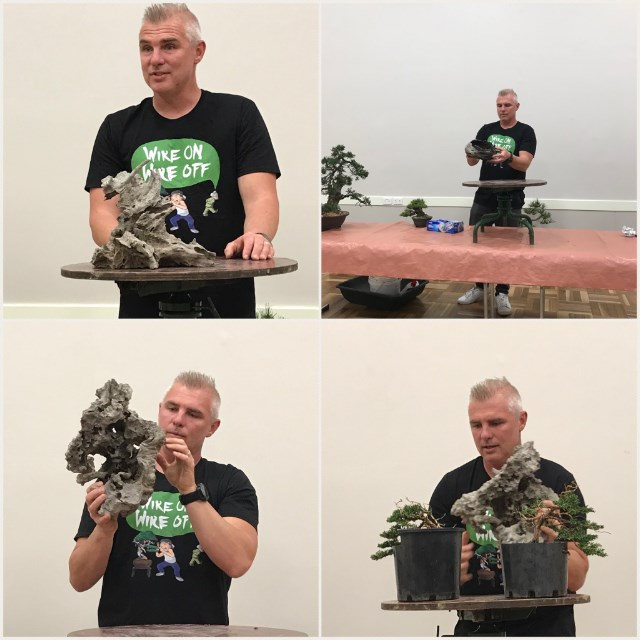
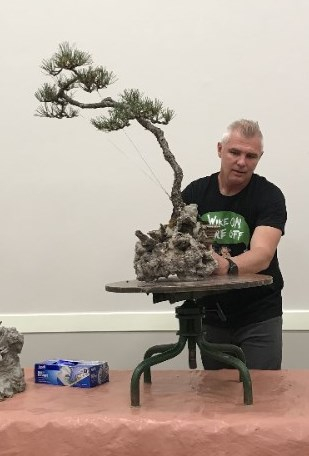 Sean tried out the different effects that could be achieved by showing how each vessel accentuated the qualities of a tree. For example, this willowy rather feminine pine worked well in its pot and this piece of mallee but looked truly wonderful when paired with the burl that Sean had picked up on a bush walk. His point was that this tree actually looked its best in a container that cost him zero dollars. Of course, Sean was cognisant that the burl would not have the longevity of a clay pot but in the interim, it would be a truly unique bonsai.
Sean tried out the different effects that could be achieved by showing how each vessel accentuated the qualities of a tree. For example, this willowy rather feminine pine worked well in its pot and this piece of mallee but looked truly wonderful when paired with the burl that Sean had picked up on a bush walk. His point was that this tree actually looked its best in a container that cost him zero dollars. Of course, Sean was cognisant that the burl would not have the longevity of a clay pot but in the interim, it would be a truly unique bonsai.
Continuing with his theme of using readily available materials that don’t cost an arm and a leg, Sean moved to the main part of his demonstration, ably assisted by Ian White. For his materials Sean was using a very beautiful piece of mallee wood (bought from Ray Nesci several years ago for around $30-40) and two junipers also bought from Ray around the $30 mark.
As always Sean was extremely well prepared and had everything ready to go. He had drilled the mallee where he wanted to attach the trees and wired the junipers over the weekend so the effect would be maximum but to take us through the decision making process all possibilities were canvassed. Sean and Ian played around with the placement of the trees until they (and the audience) felt that the trees were in the best positions.
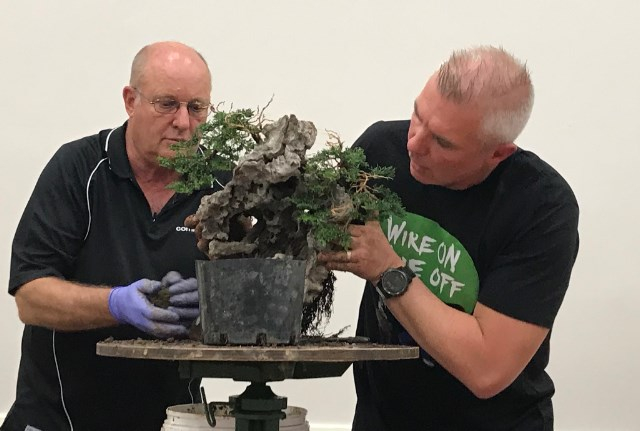 The junipers were then knocked out of their pots and their roots exposed so they could be attached to the mallee wood using a very rich smelling muck that Ian ‘had prepared earlier’. As they worked, Sean and Ian tied each tree into place using short lengths of chopsticks and wire.
The junipers were then knocked out of their pots and their roots exposed so they could be attached to the mallee wood using a very rich smelling muck that Ian ‘had prepared earlier’. As they worked, Sean and Ian tied each tree into place using short lengths of chopsticks and wire.
Sean was very particular about covering the roots with muck and guiding them downwards towards the potting medium in which the mallee root would stand.
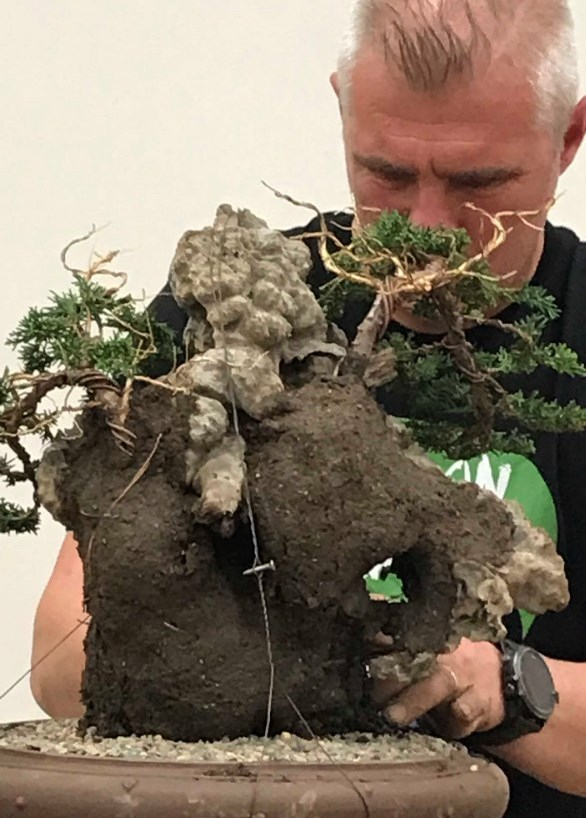 You can see how much muck was required to make sure that the roots were placed where they were wanted and had the necessary medium to reach the mix in the pot and ensure the junipers’ survival.
You can see how much muck was required to make sure that the roots were placed where they were wanted and had the necessary medium to reach the mix in the pot and ensure the junipers’ survival.
In ideal circumstances the mallee root would have been attached to the pot before the trees were attached but wire was used to keep everything in place as Sean intended to secure it later.
Finally, the trees’ branches were set.
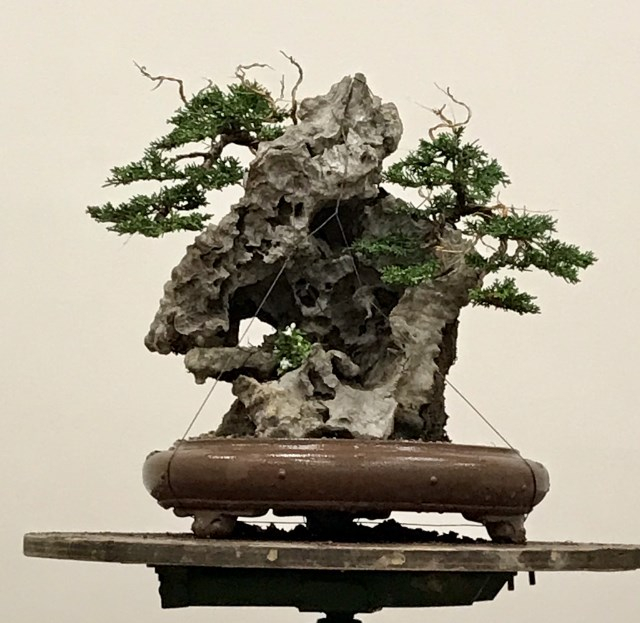
An excellent result from an excellent demonstration!

Comments are closed.